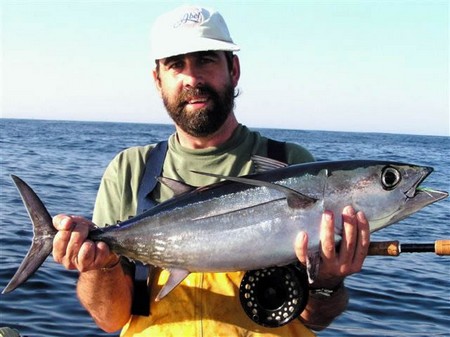Latin name: Citharichthys xanthostigma
Best time to catch: Year-round
Also known as: Catalina sanddab, sanddab, soft flounder
The longfin sanddab ranges from Costa Rica to Monterey, California. It has a flat, oblong body with a straight lateral line that runs the entire length of its eye side. It has fairly large scales and a large mouth. It is a left-eyed species. It is dark brown with small white spots and a black pectoral fin along the eye side. The blind side is off-white to tan. The pectoral fin is longer than the head. The caudal fin is slightly rounded and the same color as the body.
Female longfin sanddabs are generally larger than males and sexually mature at about 3 years of age. They produce 25,000 to 50,000 eggs per spawn, and spawn more than once during the spawning season, which extends from July through September.
It frequents sandy or muddy bottom from 10 to 650 feet deep. It feeds along the bottom in deep holes seeking squid, octopus, and small fish. It also eats shrimp, fish eggs, crabs, sandworms, bloodworms, and sea worms. As with most flatfish, longfin sanddab buries itself in the sand or mud with only the eyes protruding from the bottom. It can change color to camouflage itself for protection from predators.
Fishing Tips
It’s best to fish deep holes in deepwater sandy or muddy areas. Drift over suspected areas while keeping the baited hook directly on the bottom with a suitable weight sinker.
Bait
The longfin sanddab will leap on a baited hook. Terminal fishing rigs can vary from one to ten hooks or more per rig, although most anglers use from one to four hooks per rig because of simplicity. Use strips of cut squid, cut octopus, shrimp, crabs, sandworms, or bloodworms.

Equipment
If you’re using ten hooks or more, the rod of choice will have roller guides to reduce the friction on the line. Use a 6- to 7-foot fast- to extra-fast-action boat rod with matching conventional bait-casting reel filled with 25- to 40-pound-test monofilament line. This setup should be sturdy enough to haul in several fish at a time.
With one to four hooks, use a 6- to 7-foot moderate- to fast-action boat rod with matching conventional bait-casting reel filled with 20- to 30-pound-test monofilament line.